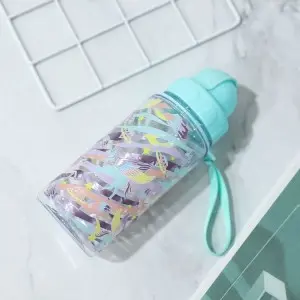Introduction
The future of recycled stainless steel water bottles looks promising as consumers and businesses increasingly prioritize sustainability and environmental responsibility. This article explores the market trends, environmental benefits, technological advancements, and consumer behavior shifts that are shaping the future of this eco-friendly product.
Market Growth and Demand
The stainless steel water bottle market is projected to reach USD 4.9 billion by 2032, exhibiting a CAGR of 6.73% during the forecast period (2024-2032) . Factors driving this growth include rising health consciousness, growing demand for sustainable packaging solutions, and increasing disposable income. North America and Europe currently dominate the market, but Asia-Pacific is expected to witness significant growth due to urbanization and changing consumer lifestyles.
Environmental Benefits
Recycled stainless steel water bottles offer significant environmental advantages. They help reduce reliance on single-use plastic bottles, which contribute to plastic pollution and have a substantial carbon footprint. Stainless steel is highly recyclable and can be recycled indefinitely without losing quality, making it a sustainable choice for consumers and businesses alike .
Technological Advancements
Innovations in manufacturing processes and materials are enhancing the quality and functionality of recycled stainless steel water bottles. Precision laser cutting and robotic welding techniques are improving production efficiency and reducing material wastage. Additionally, advancements in insulation technologies, such as vacuum insulation and aerogel, are providing better temperature retention for beverages .
Design and Customization
Consumers are increasingly looking for personalized and stylish products. Manufacturers are responding by offering a wide range of designs, colors, and customization options for stainless steel water bottles. Embossed logos, vibrant patterns, and textured finishes are becoming more popular, allowing consumers to express their personal style while staying hydrated .
Consumer Behavior and Market Education
As awareness of environmental issues grows, more consumers are making purchasing decisions based on sustainability. Businesses that emphasize the environmental benefits of their products and educate consumers about proper usage and recycling can gain a competitive edge. Marketing campaigns and educational initiatives will play a crucial role in driving adoption rates .
Industry Collaboration and Policy Support
Collaborations between manufacturers, retailers, and environmental organizations can help expand the market for recycled stainless steel water bottles. Government policies and regulations aimed at reducing plastic waste and promoting sustainable products will also influence market dynamics. Initiatives such as extended producer responsibility (EPR) programs and recycling incentives can further boost the adoption of these eco-friendly alternatives .
Conclusion
The future of recycled stainless steel water bottles is bright, driven by market demand, environmental benefits, technological innovation, and changing consumer preferences. Businesses that invest in sustainable materials, innovative designs, and effective marketing strategies will be well-positioned to capitalize on this growing market. As consumers continue to seek ways to reduce their environmental impact, recycled stainless steel water bottles will remain a popular choice for hydration needs.
Post time: Mar-12-2025
